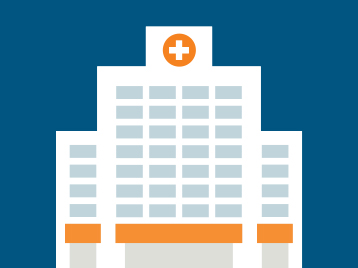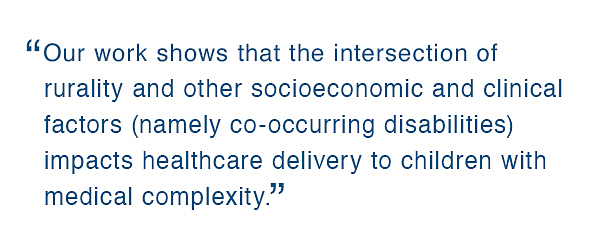DataMatters - May 2024 Edition Email

DATE: May 30, 2024

Today in DataMatters, we are happy to announce the release of CHIA’s first interactive dashboard on acute care hospital outpatient observation visits. This quarterly dashboard is part of a CHIA series providing regular analyses and trends sourced from the Case Mix database. Read more details and see notable key findings in the “News You Can Use” segment below.
This past month, CHIA released its second dashboard on the state of primary care in Massachusetts. This dashboard aims to provide a factual foundation to inform targeted policy solutions and investments as well as monitor the impact of such reforms.
Additionally, we were excited to release the inaugural results of the first Massachusetts Health Care Workforce (MHCW) survey. CHIA launched the survey in May 2023 to collect information on staffing capacity and diversity across several key health care sectors including hospitals, nursing homes, and community health centers. The interactive dashboard enables users to explore sector-specific findings as well as statewide cross-sector results for certain occupations: physicians, registered nurses (RNs), licensed practical nurses (LPNs), direct care workers, and social workers.
In the “Data User Profile” section, we are featuring the results of a study evaluating rural-urban disparities in health care delivery to children with medical complexity and exploring whether the types of health coverage, existence of co-occurring disability, or community poverty impacted the effects of rural living on care delivery.
CHIA will hold its next Oversight Council meeting on Tuesday, June 18. Watch the livestream of the meeting here.
As always, we hope that you enjoy this newsletter and learn something new. We welcome your feedback at newsletter@chiamass.gov.
News You Can Use

The Center for Health Information and Analysis (CHIA) today published its first interactive dashboard on acute care hospital outpatient observation visits. Building upon its January 2022 report, Massachusetts Acute Care Hospital Outpatient Department Data (FFY 2016-2019), this dashboard uses the most recent interim data to provide timely quarterly insights into outpatient observation utilization in the Commonwealth. Observation visits are classified as outpatient care and may serve a variety of functions, including the assessment of patients who may require additional diagnostic or therapeutic treatment beyond care in an emergency department, but do not require admission to the inpatient setting.
This update provides information and analyses of hospital outpatient observation utilization patterns from Federal Fiscal Year (FFY) 2019 through FFY 2023 (October 2018–December 2023). This update includes a summary, accompanying databook, and technical appendix.
The dashboard includes information divided into the following sections:
|
|
|
|
|
|
Notable key findings include:
- There were approximately 200,000 observation visits annually between FFY 2019 and FFY 2023.
- The average length of stay in outpatient observation has increased from 30 hours to 36 hours from FFY 2019 to FFY 2023.
- Similar to trends in inpatient hospitalizations and treat-and-release emergency department visits, the volume of outpatient observation visits has remained lower than pre-pandemic levels.
This series will be updated on a quarterly basis as more data becomes available. For more information about this quarterly update, or the full previously published report on Acute Care Hospital Outpatient Observation data, please visit https://www.chiamass.gov/outpatient-observation-database-reporting/.
CHIA also updated its analysis exploring inpatient utilization (HIDD) and emergency department (ED) patterns for October 2018–December 2023. Read more here.
Data User Profile
In DataMatters, CHIA always features an interview with a user of CHIA data in the “Data User Profile” segment.For this month we are excited toincludean article published in the Journal of Rural Health, Rural-urban disparities in health care delivery for children with medical complexity and moderating effects of payer, disability, and community poverty.This research was supported by the National Institute on Minority Health and Health Disparities of the National Institutes of Health.
Mary Arakelyan, MPH, Research Project Manager at Dartmouth Health Children’s—along with her co-authors, Mr. Seneca D.Freyleue, Dr. Andrew P. Schaefer, Dr. Andrea M. Austin, Dr. Erika L. Moen, Dr. James O'Malley, Dr. David C. Goodman, and Dr. JoAnna K. Leyenaar (Principal Investigator)—explored the differences in health care delivery across the continuum of care for rural- versus urban-residing children with medical complexity. This study was conducted using CHIA’s Massachusetts All-Payer Claims Database (MA APCD).
We are very grateful for the participation of Ms. Arakelyan and the willingness to feature her work in DataMatters.
What was your research question? Why did you choose that question?
Children with medical complexity are a small subset of the pediatric population who are impacted by serious and chronic health conditions, often involving multiple body systems or the need for technological support. This population is typically characterized by high levels of health care utilization. The National Institutes for Health recognize underserved rural communities as populations impacted by health disparities, and rural-residing children with medical complexity may be particularly vulnerable compared to their urban-residing peers. However, this has been the focus of very little prior research.
In this project we set out to understand differences in health care delivery across the continuum of care (ambulatory, emergency department, acute care hospital, and post-acute care) for rural- versus urban-residing children with medical complexity. We also assessed whether having Medicaid coverage, a co-occurring disability, or living in an area with high levels of child poverty modified the effect of rurality on care delivery.
Which CHIA data do you use?
We used the Massachusetts All-Payer Claims Database (MA APCD) from 2013 to 2017.
What was your experience using CHIA data?
Being able to study healthcare delivery at a population-level and across payers is a unique strength of this research and a fresh methodology in pediatric health services research, which we have been able to access through CHIA’s data offerings. Not all states that collate all-payer claims data make it available to research, making the use of CHIA data particularly exciting.
Please briefly describe your research and key findings.
We found that rural-residing children with medical complexity had fewer ambulatory care visits and hospitalization days, more emergency department visits, and were less likely to receive any post-acute care (defined in our work as care in long-term care or skilled nursing facilities, home care, and similar services) compared to their urban-residing peers.
Being covered by Medicaid (as opposed to having commercial-only insurance), having a co-occurring disability in addition to medial complexity, and living in areas with high child poverty (>20%) modified the strength and direction of several of these relationships. For example, although rural residence was associated with more ED visits compared to urban residence in areas with low and high child poverty, the difference was wider when looking within areas with high poverty.
Which findings were particularly interesting or surprising for you?
Although we did identify rural-urban differences in health care delivery, we were surprised that the magnitudes of differences were not as large as we would have expected based on similar analyses in the general child population of the United States. This may be because children with medical complexity are a special group with high care needs and therefore high utilization to meet those needs that is less dependent on rurality. This raises questions about the added burden of travel time and time off work that rural-residing families may incur to meet the needs of their children with medical complexity to a similar extent as their urban-residing peers.
Our work shows that the intersection of rurality and other socioeconomic and clinical factors (namely co-occurring disabilities) impacts healthcare delivery to children with medical complexity.

What "takeaway" information would you like to highlight from your research and/or experience using our data?
Our work shows that the intersection of rurality and other socioeconomic and clinical factors (namely co-occurring disabilities) impacts healthcare delivery to children with medical complexity. In September of 2023 the National Institute on Minority Health and Health Disparities designated people with disabilities as a group impacted by disparities. We hope that our research will prompt other researchers, policymakers, and clinicians to think about children with medical complexity, and consider how intersecting vulnerabilities, such as rural residence and co-occurring disabilities, will impact their care.
Publications and Data Releases
OOD, HIDD and EDD Case Mix Quarterly Dashboards
May 2024
CHIA published its latest interactive dashboard on emergency department (ED) visits and hospital inpatient and discharge data (HIDD) as well as its first interactive dashboard on outpatient observation data (OOD) (see more details above). This quarterly update shows trends revealed by emergency department Case Mix data from October 2018 – December 2023. Quarterly reports are based on interim data and are updated as more complete information becomes available.
Results from Massachusetts Health Care Workforce (MHCW) Survey
May 2024
CHIA recently released the results from its inaugural Massachusetts Health Care Workforce (MHCW) survey in an interactive dashboard. Massachusetts health care providers are experiencing unprecedented workforce shortages. The lack of diversity in the health care workforce additionally adversely affects the health outcomes of people of color. These distinct—but related—issues of workforce capacity and diversity have clear consequences for access to care, quality of care, cost, and health outcomes.
The interactive dashboard enables users to explore sector-specific findings as well as statewide cross-sector results in five key occupations: physicians, registered nurses (RNs), licensed practical nurses (LPNs), direct care workers, and social workers.
Primary Care Dashboard
May 2024
The Center for Health Information and Analysis (CHIA) in collaboration with Massachusetts Health Quality Partners (MHQP) published the latest primary care dashboard to monitor the health of primary care across the Commonwealth.
New this year, selected measures can be stratified by geography, payer type, and sociodemographic dimensions in our interactive Tableau dashboard.
Hospital and Health System Performance Dashboard
May 2024
CHIA has released the latest iteration of its Hospital and Hospital Health System Overview Dashboard. This dashboard enables a more comprehensive look at the acute hospital industry in HFY 2023, and includes financial and utilization data sourced from the standardized financial statements, hospital cost reports, relative price, and Case Mix data. This interactive dashboard includes all hospitals and systems with a fiscal year end date of June 30 or September 30.
Upcoming Events and Resources
Events and announcements of interest to our community, organized by CHIA, our data partners, and others
Health Equity Trends Summit
Thursday, June 6, 2024, 9:00 AM - 4:00 PM
The Health Equity Compact is hosting its next summit on Tuesday, June 6. This year’s theme is “Health Equity in Action.” The agenda includes following up commitments made in the first summit, showcase progress over the past year, discuss future opportunities, and foster more in-depth engagement and connection.
See more details and register here.
Massachusetts Health Policy Commission Board Meeting
Thursday, June 13, 12:00 PM
The HPC’s 11-member Board meets approximately every six weeks throughout the year to review staff- (or guest)- presented overviews of the agency’s major workstreams, and other topics related to health care cost containment and reform. Major reports, statutory regulations, and publications are authorized by a majority vote at these meetings.
CHIA Oversight Council Meeting
Wednesday, June 18, 2024, 3:00 PM
CHIA’s appointed Oversight Council meets quarterly to discuss agency priorities and agenda-setting. The next meeting is scheduled for Tuesday, June 18, 2024 at 3:00 p.m. and will stream live on CHIA’s YouTube channel.
CHIA Data User Workgroups
Tuesday, June 25, 2024, 3:00 PM
These ongoing meetings are designed for data users and other interested parties to connect with CHIA to discuss analytical techniques and best practices in research using CHIA's MA APCD and Case Mix databases.
The next virtual workgroup meeting will be on Tuesday, April 23, at 3:00 PM. . For more information including past presentations and user support materials, visit the information page. To learn more about CHIA data, please visit https://www.chiamass.gov/chia-data/.
National Academy for State Health Plans (NASHP) 37th Annual Conference
September 9-11, 2024
Nashville, TN
Join hundreds of state leaders from all 50 states and DC, as #NASHPCONF24 brings attention to the most timely, cutting-edge issues facing state health policymakers, and highlights innovative solutions shared by the nation’s leading experts on topics including: lowering prescription drug costs, hospital costs, Medicaid, health insurance marketplaces, telehealth, social determinants of health, behavioral health, and more.
American Public Health Association (APHA) Annual Meeting Expo
October 27-30, 2024
Minneapolis, MN
The 2024 APHA Annual Meeting and Expo will take place in Minneapolis, MN on Oct. 27-30, 2024. The annual conference provides high-quality, science-based education, engaging networking opportunities, and cutting-edge resources to thousands of public health professionals from across the nation. Registration and housing will open in June 2024. This year’s theme is “rebuilding trust in public health and science.”
Registration and housing will open in June.
Massachusetts Association of Health Plans (MAHP) 2024 Annual Conference
SAVE THE DATE! Friday, November 15, 2024
MAHP will be holding this year's conference at the Seaport Hotel on November 15th. Individual registrations will open in June. Please reach out to Ann Chamberlin at chamberlin@mahp.com to get information on sponsorship opportunities. See here for more information: https://mahp.com/annual-health-care-conference/.
Join Our Team
A selection of open positions at CHIA. Please feel free to share broadly with your network. Follow CHIA on LinkedIn for more regular updates.
Manager, Health Informatics and Reporting Team
Health Informatices and Reporting
CENTER FOR HEALTH INFORMATION AND ANALYSIS
www.chiamass.gov
